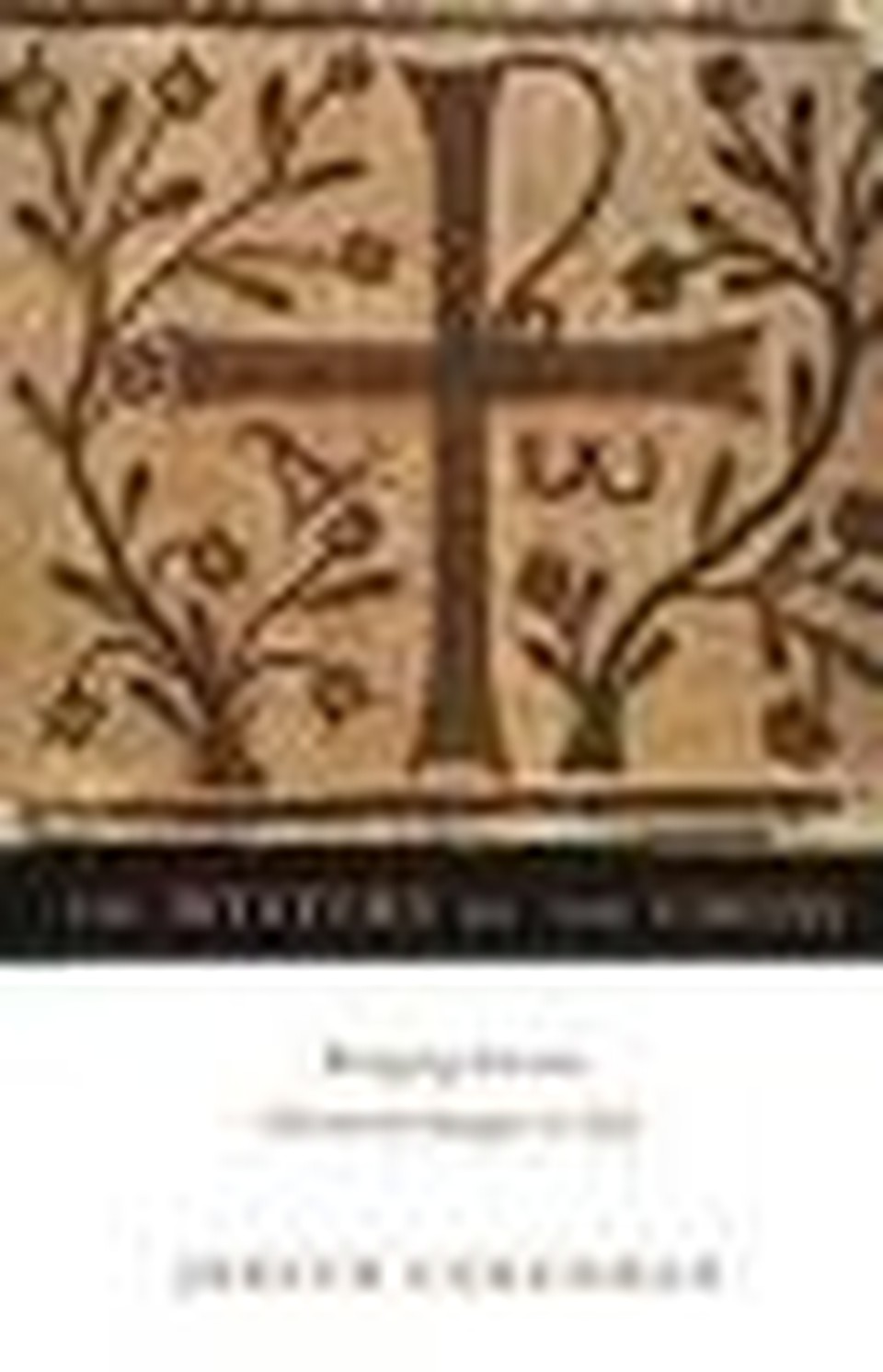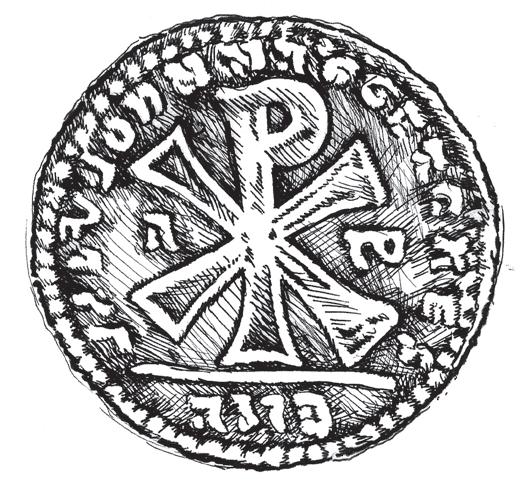Coins for the Kingdom: The Mystery of the Cross

EDITOR'S NOTE: The following is an excerpt from The Mystery of the Cross: Bringing Ancient Christian Images to Life by Judith Couchman.
From the beginning, Christ's followers celebrated the cross as a symbol of their faith. It was honored in church worship, carved into rough tombstones, pressed onto loaves of bread and set out as a sign of sanctuary. The cross represented what Christians believed, who they hoped for and how they approached life. Here, author Judith Couchman explores early images of the cross, what they meant to the early church, and what they tell about the meaning of the Savior's sacrifice.
Coins for the Kingdom
Now have come the salvation and the power and the kingdom of our God, and the authority of his Christ. —Revelation 12:10
Constantine's ego was no exception, and he continued the imperial tradition of ubiquity by gracing coins with his image. The British Museum in London claims, "One important legacy of Constantine's authority is his coinage. The coins of Constantine and his sons are still some of the most common to be dug up in Britain today." Three coins displayed at this museum exemplify Constantine's influence on coinage, gradually replacing pagan images with Christian symbolism and in particular, the cross.
A silver coin from the beginning of Constantine's reign (c. ad 306-307) depicts the profile of a young man wearing the Roman laurel leaf. Created when Constantine still held the title of Caesar, the reverse side of the coin features the gate of a Roman military camp. The museum titles the coin's description "A Symbol of Security," emphasizing the empire's military might.
After Constantine became the sole Roman emperor, in the early fourth century he distributed a golden coin with his profile looking heavenward. Although some images of Alexander the Great (336-323 bc) exhibited this pose, the museum explains that Constantine's upward look suggests his dependence on God and titles its display "Divine Inspiration." In contrast, the back of the coin illustrates Constantine's brutality toward his enemies. Although ancient Romans wouldn't think of this two-sided coin as thematically inconsistent, today we'd criticize Constantine for his mixed messages.
Eventually the coins for the Roman empire featured small images of the Christogram, an image of the Chi-Rho cross he saw in the sky before his battle at Milvian Bridge in ad 312. A third coin at the British Museum, minted in the mid-fourth century, displays a Christogram on its reverse side. The museum displays this coin with the title "The First Symbol of Christian Faith." The museum explains, "The example illustrated shows the Christogram in its fullest form. . . . Though the western provinces of the Roman Empire were Latin-speaking, and the Greek letters would have been meaningless to most people, the symbolism would have been instantly recognized."
Roman Coins with the Cross
Even though Constantine introduced Christian images, he still circulated coins that joined his image with pagan symbols like the sun god, especially at the beginning of his reign. This religious syncretism decorated the empire's coins until Emperor Theodosius declared Christianity the empire's official religion in the late fourth century. While emperors still graced the coinage, increasingly the cross appeared with the rulers and pagan images disappeared.
By the reign of Theodosius II in the fifth century, coins adopted an "overtly Christian character." Over time, the cross supplanted longstanding pagan themes on the coins. For example, the female Victory image began holding a cross instead of a staff, and eventually she turned into the archangel Michael shouldering a cross and a globus crucige (an orb topped by a cross). The orb-and-cross images represented the emperor's divine authority. A popular seventh-century motif on Byzantine coins displayed the cross at the top of three stairs, commemorating Christ's journey to Golgotha. With the exception of a century of iconoclasm, when Christians debated the use of sacred images, Byzantine rulers imprinted coins with crosses until the fifteenth century. As the golden money changed hands, Roman citizens exchanged these small crosses, the symbols of a higher and lasting authority.
Our Own Uncertain Times
In our own uncertain times, Roman "cross coins" speak to us about the true source of security. Ultimately, we can't depend on coins or paper money or employment or prosperity to provide daily necessities or secure the future. History warns that mighty kingdoms like the Roman Empire eventually fall. The Visigoths destroyed the Western empire when they sacked Rome in 410 and carried away prisoners, including the emperor's sister. After a struggling revival the Eastern empire fell a second and final time in 1453 when Ottoman Turks captured Constantinople.
Ironically, cross-imprinted coins from these governments have survived, directing us to Christ. He urges us to ask for our daily bread; to not think about tomorrow; to not lay up treasures in heaven. Instead, he'll provide for us. I crave the simplicity of the Lord's directives, but it's hard to truly believe and follow them when money dwindles and bills pile up. I keep thinking if I earn more money I'd be secure, not considering that banks fail, stock markets plummet and cash loses its value.
When economies falter, we're led back to Christ's words. His promise of provision transcends the transition of world leaders, the pillage of empires and the collapse of economies. He assures us: in God we can trust.
Taken from The Mystery of the Cross: Bringing Ancient Christian Images to Life by Judith Couchman. Copyright(c) 2009 by Judith Couchman. Used by permission of InterVarsity Press PO Box 1400 Downers Grove, IL 60515. www.ivpress.com.
Originally published March 23, 2010.








